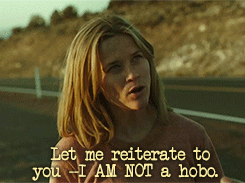The Importance of Web Design: Your Best Foot Forward
Imagine you are the smartest person in the world (this shouldn’t be too much of a stretch – you seem pretty awesome). As someone with so much knowledge and wisdom, you have a lot to offer the world. You can solve world hunger, design the first flying car, or even determine once and for all which way the toilet paper roll should face. Now, imagine that, as the smartest person in the world, with the wealth of information and knowledge you offer to the world, you look like a hobo. Your clothes are shabby, your shoes are losing their soles, and you look like you haven’t showered in weeks. Would people take you seriously? Would they take your advice and put you in charge of the affairs of the world? Probably not. This is an example of the importance of web design.

You see, appearance matters when it comes to business. When customers work with a company, they want them to look good. It’s more about the customer’s perception of themselves than it is about the business itself. We all want to be surrounded by hip, good-looking people, and work with and buy products from cool, impactful businesses. This fact alone illustrates the importance of web design.
Good web design also builds trust: As humans, we are much more likely to trust someone who is good looking, than someone who isn’t. Sadly, it’s how our brains are wired. Good design works the same way: We have all visited web sites that just give us the heebie jeebies – those sites that you just know will result in getting weird charges on your credit card, or ending with your computer giving you the blue screen of death after you’ve accidentally downloaded a virus.
You might have a decent site – one that, with time spent browsing, your customers won’t mind. Unfortunately, this isn’t enough. Humans are extremely judgmental; you have a couple hundred milliseconds to make the right impression.
You Have 200 Milliseconds: Now, Go!
First impressions are key to building trust and growing a strong, dedicated customer base. And, the bar is rather high. Per recent studies, it takes “less than two-tenths of a second for an online visitor to form a first opinion of your brand once they’ve perused your company’s website.” 200 milliseconds for them to form an opinion on your brand. They’re not even forming an opinion about just your website – they’re judging your entire brand based on 200 milliseconds.

That’s crazy.
But, it’s how humans work, so us marketers must adapt and rise to the challenge. As you can see, having a well-designed website is important. This is true of every business on earth. You may have an incredible product virtually selling itself and flying off the shelves. That is fantastic! Now, imagine if your website was simple, optimized for conversions, and easily crawled by search engines, allowing and encouraging more visitors to buy.
You would be that much more successful.
Now, you may be thinking: I don’t like playing this game. There are thousands of businesses who are hobos in disguise: Shady businesses operated by shady people who look good, but who really scam people out of their money. This is true. It’s a sad fact. It’s also how the world works. But, it really isn’t fair to your business, or the people who would benefit from the good services your business offers, to refuse to dress up and put your best foot forward. In the greater scheme of things, having a great website is the easiest thing you can do for your business. It’s far easier than making a great product, shipping on time, providing excellent customer service, and building a brand. It’s a great place to start if you want to boost your sales and build a better brand persona.
So, how do I get started?
Most people aren’t design experts. This leads to a problem: They go out searching for design experts, and get scammed into paying thousand of dollars for a website that took seconds to create. Because (I’m going to let you in on a trade secret), creating a great website is taking less and less time, and becoming more and more simple with each passing year.
Unfortunately, most people don’t know this, and so they spend a ridiculous amount of money, because they don’t know where to start.

This makes us mad.
Really mad. Nothing is more frustrating than working with a business who has a website they paid thousands of dollars for. Most often, these costly websites really aren’t that great. This kind of scammy behavior is unacceptable, both in the business world, and as a decent human being.
So, how do I get started and not get scammed?
We’re passionate about many things, but helping businesses become successful is at the top of the list. For example, all digital efforts should be executed with the goal of their role in growing your business. It’s tough to be successful when you’re paying ridiculous amounts of money for basics like a great website that are essential to long-term success. Here are a few tips for finding a web designer who isn’t scamming you:
1. Keep it Simple, Stupid
First, look for someone who understands that simplicity is key when designing a site. Clean lines and a simple color pallet will be much more effective for conversion.
2. Mind the Cost
Don’t pay thousands of dollars for a website. Just, don’t do it. The odds are your business doesn’t need all the bells and whistles, security and storage as a large corporation. Now, don’t do the alternative and pay your cousin $50 to design a site: Remember, the purpose is to make a good impression, not just have a site thrown on the internet.
3. Ask Questions
Ask your potential web designer a lot of questions, just to know where they’re coming from, and how they’re designing the site. Ask which platform they use, how they come up with images, and whether or not they understand the importance of user experience.
4. Let Them Do Their Job
Finally, once you find a good web designer, simply sit back and let them do their job. You aren’t a designer. Otherwise you would be creating your own site. Obviously, you should have input, but make sure you let them be the expert. There is a lot of science to the layout, colors, and design of a site, and your web designer understands these concepts, and will implement them unless you get too picky.
The Importance of Web Design: Basics of a Great Site
We’ve discussed the need for a great web site, how to not get scammed (and how depressing it is that there are so many terrible people in the world), but we haven’t actually discussed what makes a great site. That’s because it’s quite simple. Are you ready?
Purpose.
What is the purpose of your site? This is the main thing you need to consider as you begin to understand the importance of web design. If you have a fancy site that doesn’t serve your purpose, it is pointless. Make sure you know your purpose, and the rest will fall into place. These are the top aspects we consider when we are designing a site:
![]()
Navigation:
Navigation is one of the most crucial parts of a site. If your purpose is to guide people to make a purchase, but they can’t find their shopping cart once they’ve added an item to it, you’re going to lose a sale. Confusing navigation isn’t only bad for user experience – it hampers search engines from crawling your site. Simple navigation and design will aid your SEO efforts in a big way.
![]()
Ease of Use:
This leads us into our next aspect: Ease of use. We’ve all been on sites that are as confusing as hell. All you want to do is find the business hours, and instead you find yourself sorting through pages and pages of useless information. Don’t make your website a maze for your customers: Life is hard enough as it is.
![]()
Simplicity:
Simplicity is also crucial for the success of your site. If you keep simplicity in mind with design, your brand will shine through. Don’t have a ton of flashing information, or confusing layouts that will frustrate visitors. Simple design will also speed up your loading time, which we all know is awesome. Keep it simple, stupid.
![]()
Calls to Action:
Speaking of keeping it simple: Don’t make it hard for your customers to complete their task. Don’t hint at where your visitor should go to convert: Make it obvious. Put a big arrow – lead them to the next step. We all have enough practice reading through the lines and taking hints, because all have those crazy extended family relationships that keep us on our toes. Don’t make it difficult.
![]()
Layout:
The human brain is peculiar when it comes to how it views websites. We tend to look at sites in an “F” pattern – from left, downward. Roughly 70% of our time on websites is spent looking at the left side of the page. Placing the most important content on the left, and above-the-fold will increase conversions and efficiency of your site.
Whew. That’s a lot to consider.

Don’t panic – you got this. We’ve discussed why you need to put your best foot forward online, how to find a good web designer, and a few basics of web design. Basically, it all boils down to one thing:
Purpose.
What’s your purpose in having a website? This will drive your strategy in either updating your website (because, we haven’t heard of a business whose purpose was to have a crappy website up), or getting a well-designed website online that will serve your business well. We hope you understand the importance of web design as a business now more than ever. As always, we are here to help if you need it. Because, helping businesses be successful is what makes us happy. It’s our purpose.

Leave a Reply